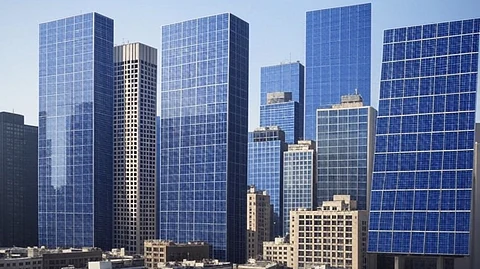

Imagine two full city blocks in downtown Calgary stacked 20-30 storeys high comprised completely of solar panels.
That’s roughly how many proposed solar farms are before the Alberta Utilities Commission (AUC) awaiting regulatory review — or enough to cover more than 37,000 acres (15,000 hectares) consiting of five million solar panels.
And that’s barely a third of what’s already installed across the countryside in what are admittedly early days for the so-called ‘renewable’ revolution.
“That’s a conservative estimate,” Russel Barnett, the unofficial spokesman for the Rural Concerned Communities Group (RCCG) in Caroline, told The Western Standard.
After attempting to find out how much land is being used for solar farms in Alberta — the AUC doesn’t disclose that number, measuring instead ‘megawatt capacity’ — Barnett thought it would make for an interesting thought exercise to visualize how much acreage would be needed to accommodate five million 2-metre by 1-metre standard solar panels capable of generating that amount of power.
After running all the listed project applications on the AUC website through Grok AI, Barnett — a chartered accountant by trade — came up with some staggering numbers.
If the volume of five million industrial solar panels (average size 2 m × 1 m × 0.04 m) is spread evenly over a standard American football field (5,351.21 m²), they would form a layer approximately 74.75 metres high (~245 feet) — roughly the height of a 22–25 storey building that would be visible from kilometres away.
If the volume of five million industrial solar panels (average size 2 m × 1 m × 0.04 m) is spread evenly over a standard American football field (5,351.21 m²), they would form a layer approximately 74.75 metres high (~245 feet) — roughly the height of a 22–25 storey building that would be visible from kilometres away.
And those are just the ones that haven’t been approved. As near as he can calculate, there are at least three times as many, or more than 15 million panels, already installed.
Some of those projects have reclamation costs beginning in year 10, as per AUC rules, which means they’ll be recycled or wind up in landfills.
“They’d (government officials) better start digging some pretty deep holes,” to recycle them all he quipped.
Barnett notes those numbers are just educated guesses based on setbacks and spacing distances between individual panels.
The RCCG is presently awaiting a request from Rimbey-Rocky Moutain House-Sundre MLA Jason Nixon asking the AUC to reconsider approval for a 14-megawatt facility adjacent to the hamlet of Caroline granted on February 28.
At 80 acres (32 hectares) the proposed facility is almost as large as the village itself, and butts up against residential areas adjacent to private land.
Residents insist it marks a pattern of developers using government tax breaks and so-called ‘green’ incentives to finance projects before flipping them to third parties before reclamation liabilities come due.
They argue it violates the spirit, if not the letter, of the UCP government’s renewables policy implemented in the spring of 2023.
Since going public with their opposition, groups in other parts of Alberta from Lacombe, to Hanna and even as far afield as Saskatchewan have all come forward with similar complaints about the regulatory system and abuse of process by both the authorities and the developers.
They plan to air those concerns at meetings with government officials and MLAs in the coming weeks.
“I have done an in-depth analysis on what the AUC has accepted to satisfy reclamation requirements. The developers know the rules but don’t care,” Barnett said.
In its own response to the review request dated April 22, the developer — German-based Pace Bang Energy LP — argued that the matter should not be reopened, despite the fact that Clearwater County had previously supported the project but now opposes it.
“PACE respectfully submits that Mr. Barnett has not put forward adequate grounds for a review, or, in the alternative, that the asserted grounds do not warrant a variance of the Decision,” it said.
“PACE requests that the Commission dismiss the request for review.”
